
Censer Cover
950 AD
Copper Alloy, Silver, Niello
Electroform copy of cover for an incense bowl. This is one of only three remaining from before the Norman Conquest. The original is in the British Museum. Cast in copper alloy, with applied silver plates engraved and filled with niello. It is also decorated with entwined animals and birds, and acanthus leaves.
Found in 1867 in Palace Street, Canterbury.
Reference: CANCM:nn
Can be found: Explorers and Collectors Collection
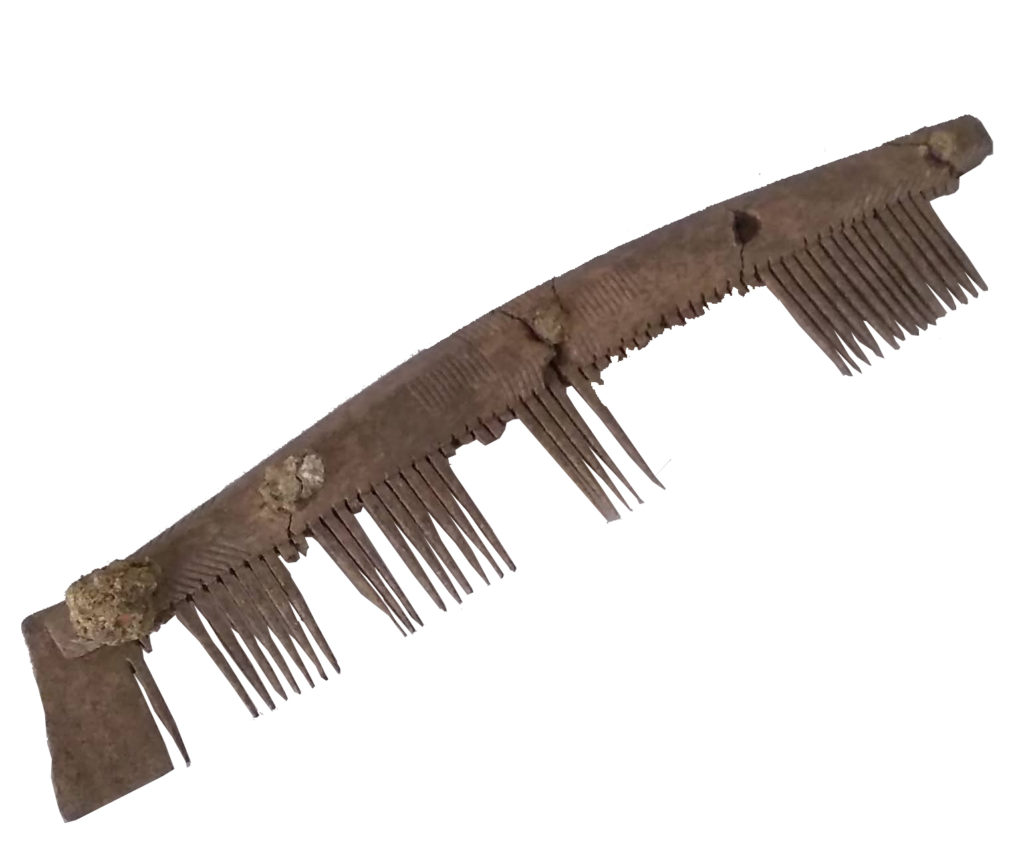
Comb
Eleventh Century AD
Bone, Copper Alloy
Single sided composite comb. Though similar combs are known from across England, this comb is Scandinavian in design, and was produced at sites around the Baltic through the early medieval period. This particular comb may have been an import, or could be a locally made copy.
Excavated in Longmarket, Canterbury. Presented by Canterbury Archaeological Trust
Reference: CANCM:1990.11.2609
Can be found: Explorers and Collectors Collection
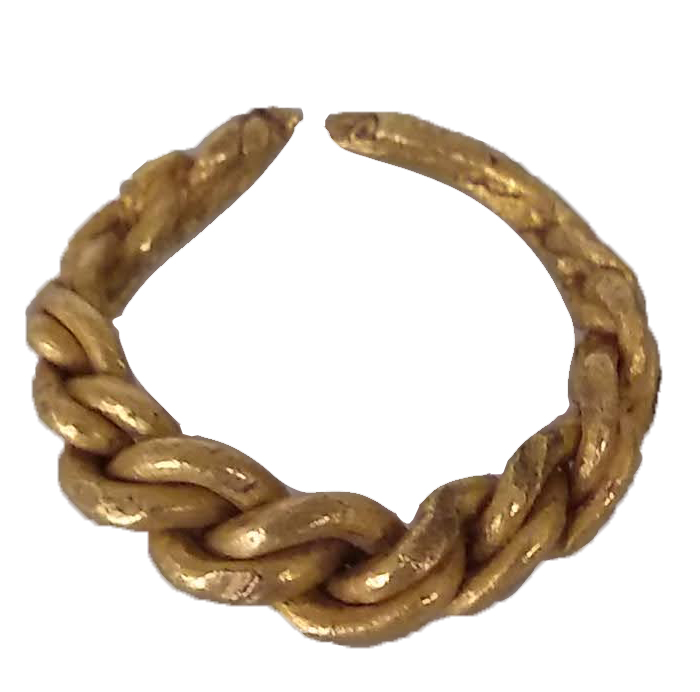
Finger ring
9th -11th Century AD
Gold
A gold finger ring made of two strands of gold twisted together and flattened at the ends. Found in Canterbury during the late Victorian period, possibly in Dane John Gardens. Originally part of the Trimnell Collection.
Reference: CANCM:9934.1
Can be found: Explorers and Collectors Collection
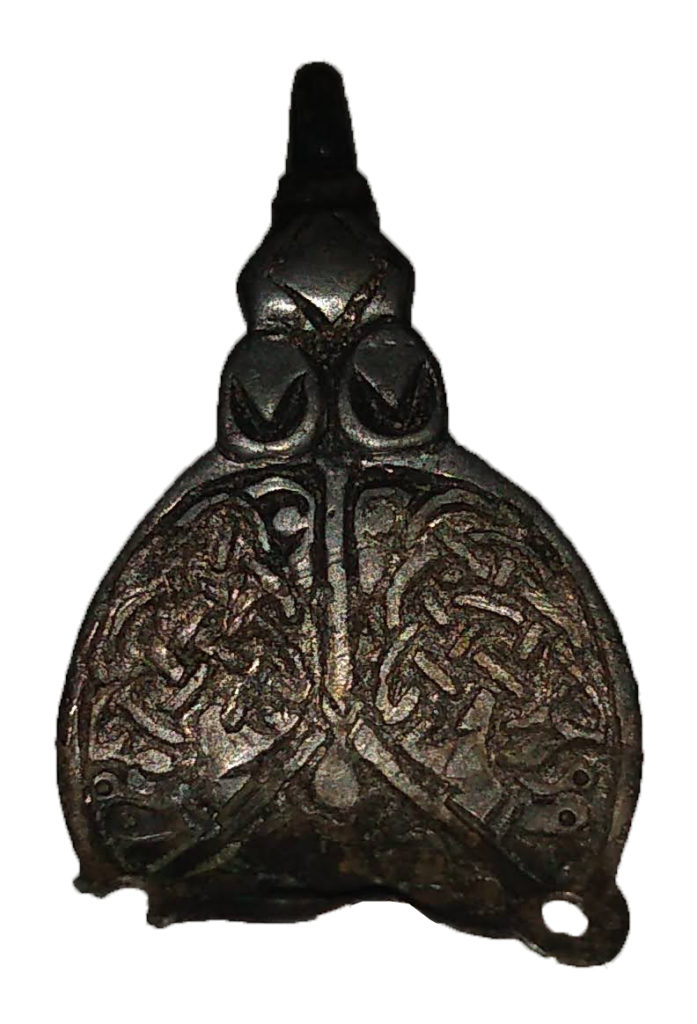
Hooked Tag
9th-10th Century AD
Silver
Hooked tags were used for a variety of functions, but primarily they were used to secure garments and purses. They would have been sewn to the cloth through the pierced lugs at the top of the tag (one of which is now broken). This tag is very ornately decorated, with each of the three areas containing a stylised depiction of an animal.
Presented by Canterbury Archaeological Trust.
Reference: CANCM:1980.12.805
Can be found: Explorers and Collectors Collection
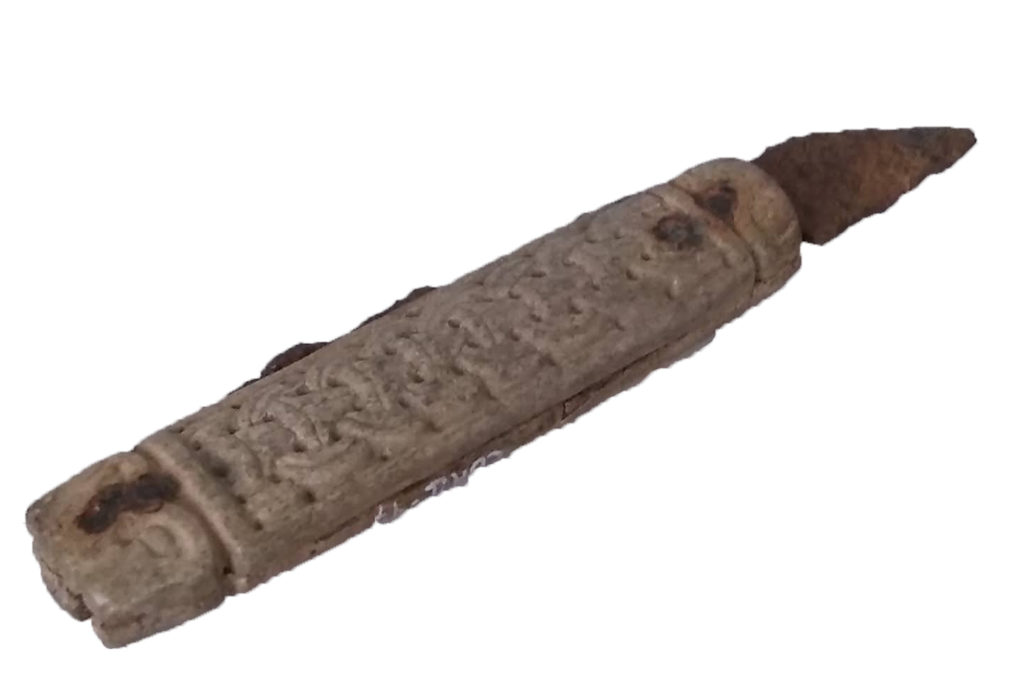
Knife
Around 950 AD
Iron, Bone
Iron knife with worked bone handle carved with serpents. Each bone piece is decorated with a pattern in an oblong box, both ends of which end in stylised animal masks. The two sides have slightly different designs. This is typical of Northern English work of the 10th Century. It is likely that it was made in the Danish Kingdom of York, known as the Danelaw. The side with the knife point at the bottom has a chain-like design. This is a well known Scandinavian design known as Borre style.
The short, wide blade is unusual amongst knives discovered from this era. It is most likely a craftsman’s knife which would, rather like a modern craft knife, allow a lot of pressure to be exerted onto its point for carving. It may have been a bone carver’s tool.
Excavated in Castle Street, Canterbury, in 1976. Presented by Canterbury Archaeological Trust.
Reference: CANCM:1976.2.97
Can be found: Explorers and Collectors Collection

Mount
9th-10th Century AD
Copper Alloy
Teardrop shaped decorated plaque. The piece is decorated with a pair of confronting and interfaced animals. The style of the decoration is closely paralleled in Canterbury manuscript illustrations of the period. It has been tentatively suggested that it may have been part of a book clasp.
Presented by Canterbury Archaeological Trust
Reference: CANCM:1978.1.456
Can be found: Explorers and Collectors Collection
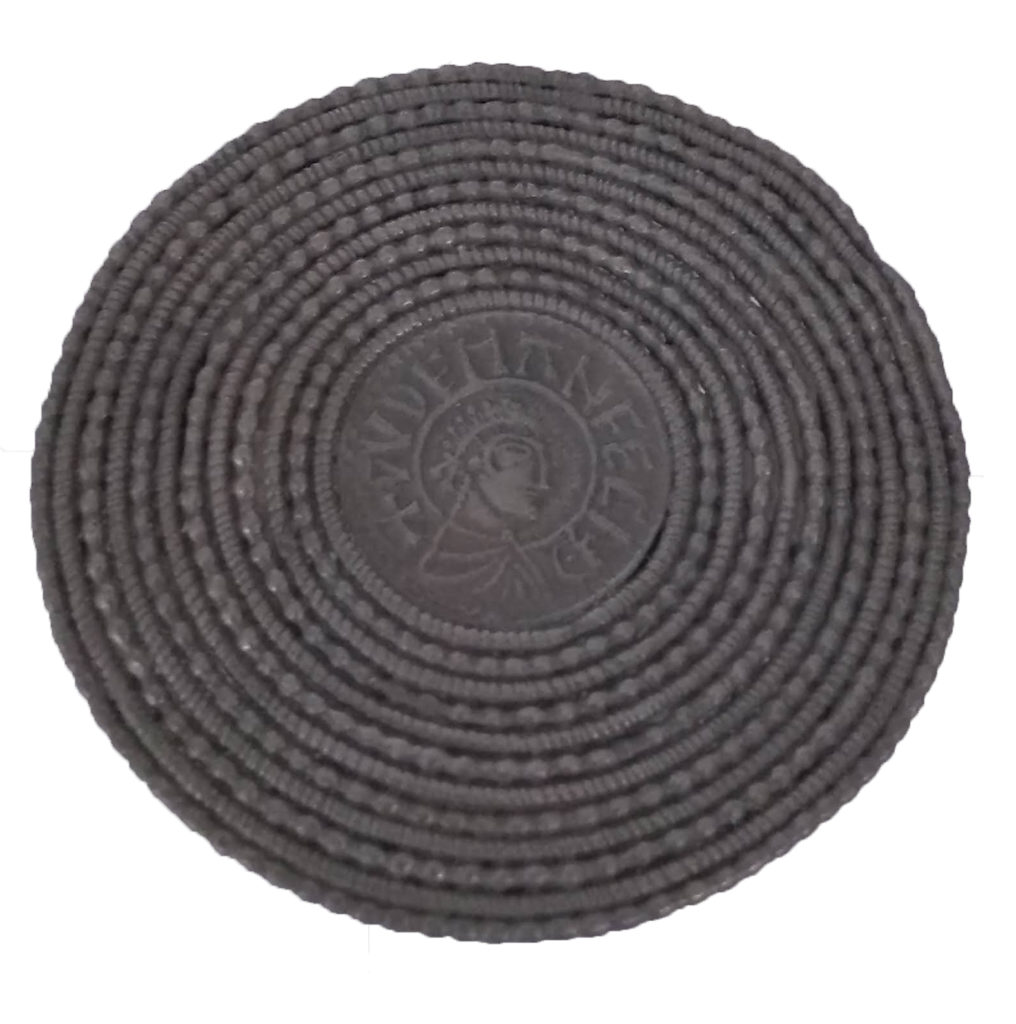
Pewter Medallion Brooch Late Tenth Century AD
Pewter
Electroform copy of brooch. At the centre is the diademed head of King Eagar (reigned AD 959-975) the same as his portrait on coins. The inscription around the edge bears the name of the maker- Wydeman, a minter working in Shrewsbury in AD 970-980.This brooch was found in Canterbury, but the original is at the Ashmolean Museum, Oxford.
Reference: CANCM:10412
Can be found: Explorers and Collectors Collection
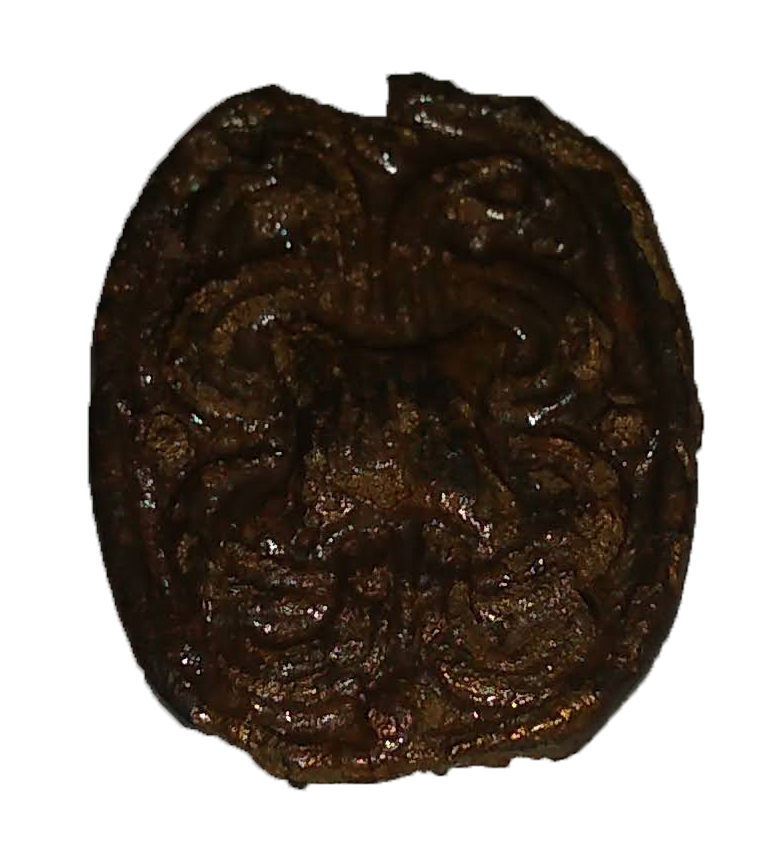
Plaque
10th Century AD
Copper Alloy
Plaque with interlaced ‘Scandinavian style’ decoration. It may have been part of applique decoration on a chest or other piece of furniture.
Discovered on Mercery Lane during building works. Presented by Mr I. Collar.
Reference: CANCM:8494
Can be found: Explorers and Collectors Collection
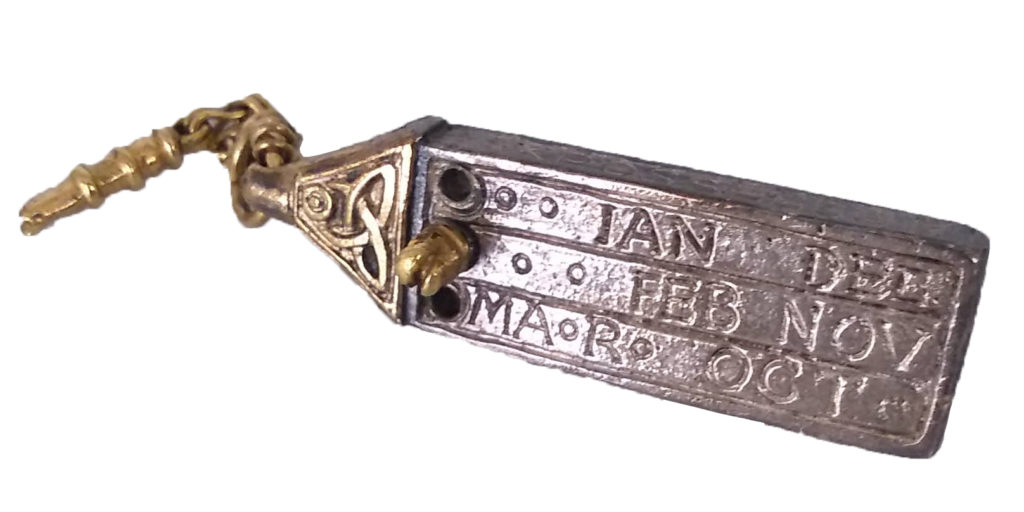
Portable Sundial
Around 950 AD
Silver Gilt
Electroform copy of portable sundial. The original is in the Canterbury Cathedral Archives. Abbreviated month names are written on each side of the sundial corresponding to the hole a peg should be placed into during that month. If dangled from its chain facing the sun, it would give an approximation of the time. Around its edges, an inscription reads ‘[SA]LVS FACTORI [PA]X POSSESSOR[I]’: ‘Health to my maker, peace to my owner.’
Found in Canterbury Cathedral’s cloister garth during alterations in 1938.
Reference: CANCM:10417
Can be found: Explorers and Collectors Collection
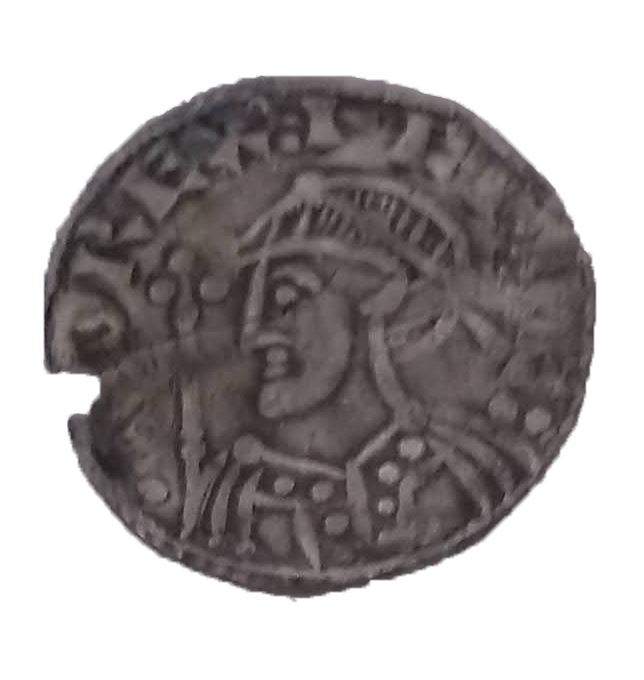
Silver Penny
Mid-Eleventh Century AD
Silver
Silver Penny of Edward the Confessor (1042-1066 AD). Edward was the last king of the House of Wessex, and the son of Æthelred the Unready. Traditionally thought to be unworldly and pious, Edward died without an heir. He promised William of Normandy the throne before his death, but then seemed to offer it to Harold Godwinson on his deathbed, asking him to protect Edward’s wife. This uncertainty and indecision caused the Norman conquest of England.
Reference: CANCM:nn
Can be found: Explorers and Collectors Collection
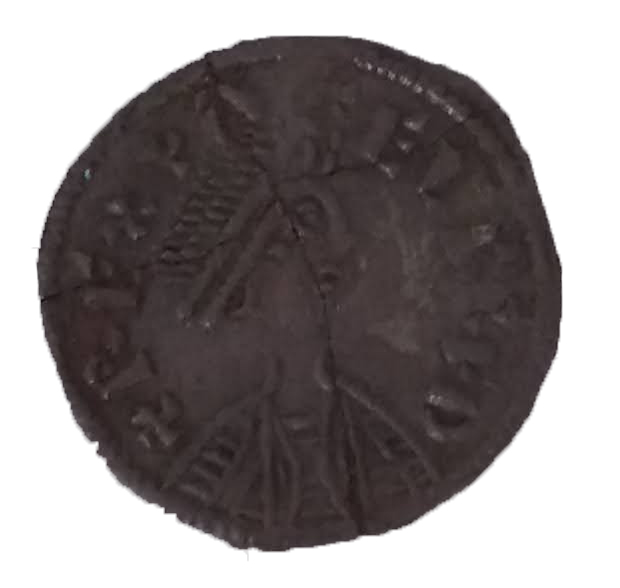

Silver Penny
Late Ninth Century AD
Silver
Penny depicting King Alfred the Great. The fifth son of the King Aelthelwulf, Alfred ruled from 871-899AD – the royal succession passed along the line of brothers rather than risk falling to a child in the face of Viking aggression. Alfred successfully fended off the Vikings from his kingdom and at the time of his death was known as King of the English.
Reference: CANCM:nn
Can be found: Explorers and Collectors Collection
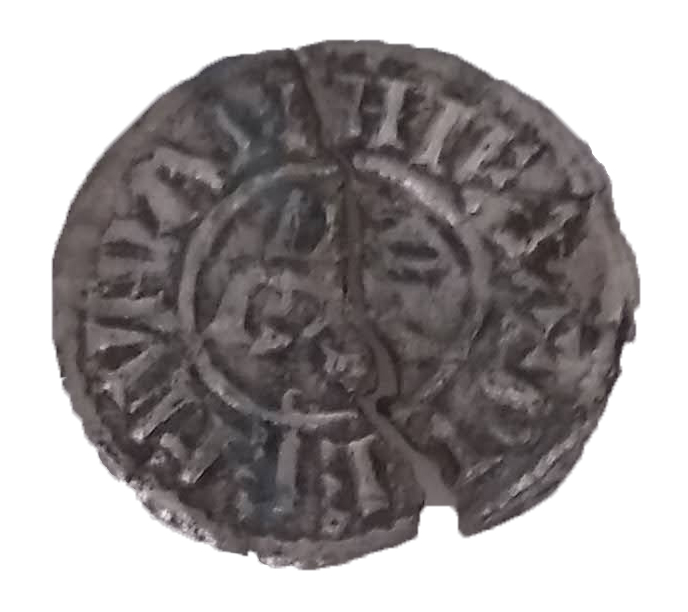

Silver penny
Late Ninth to Early Tenth Century AD
Silver
Penny depicting Archbishop Plegmund. Plegmund was from Mercia, and possibly lived as a hermit in a Cheshire marsh until he was summoned by King Alfred first to his court and then to become the Archbishop of Canterbury. This coin was minted in Canterbury, where the Archbishop had the right to mint his own coins.
Reference: CANCM:8529
Can be found: Explorers and Collectors Collection



Silver Penny
Late Tenth - Early Eleventh Century AD
Silver
Coin depicting Æthelred II, also known as ‘Æthelred the Unready’. Æthelred was king twice. He came to the throne first at the age of ten in 978 and ruled until 1013, at which point a Viking invasion led him to flee to France. The Vikings retreated the next year, and Æthelred returned to the throne from 1014 to 1016. His title ‘Unready’ comes from an old English word which means ‘badly advised’. The moneyer Leofstan made this coin.
Reference: CANCM:nn
Can be found: Explorers and Collectors Collection


Silver Penny
Early Eleventh Century AD
Silver
Silver Penny of Cnut, who ruled in England from 1016- 1035AD. Cnut was born in modern Denmark and was at by the end of his life, in his own words, “King of all England and Denmark and the Norwegians and of some of the Swedes”. After conquering England after a bloody 14 month campaign from 1015-1016, his reign restored the prosperity England had largely lost due to the threat of Viking raiders. The moneyer Wulstan made this coin.
Reference: CANCM:nn
Can be found: Explorers and Collectors Collection
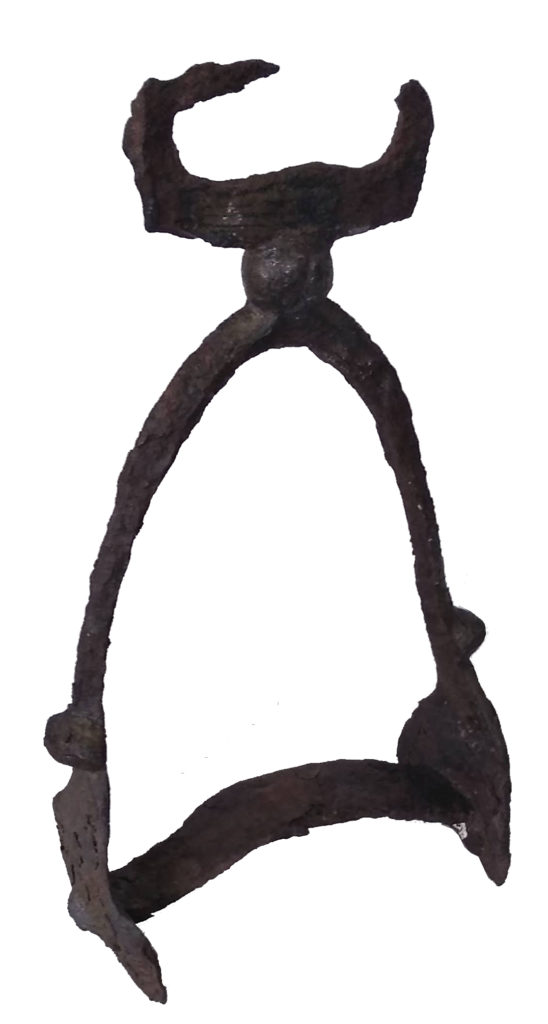

Stirrup
11th Century AD
Iron and copper
Decorated stirrup. The foot tread has been repaired. Metal stirrups changed warfare because they allowed horsemen to fight standing up, with greater control of their weapons.
The 11th century was a period of Viking raids on Kent. Canterbury was besieged and ransacked by a Danish army in 1011-12. This is probably when the stirrup was introduced into England for the first time. Horses and equipment were expensive, so few people owned them. The repair to the foot tread shows that the stirrup was highly valued.
Found in East Kent in the 19th century.
Reference: CANCM 1091
Can be found: Explorers and Collectors Collection
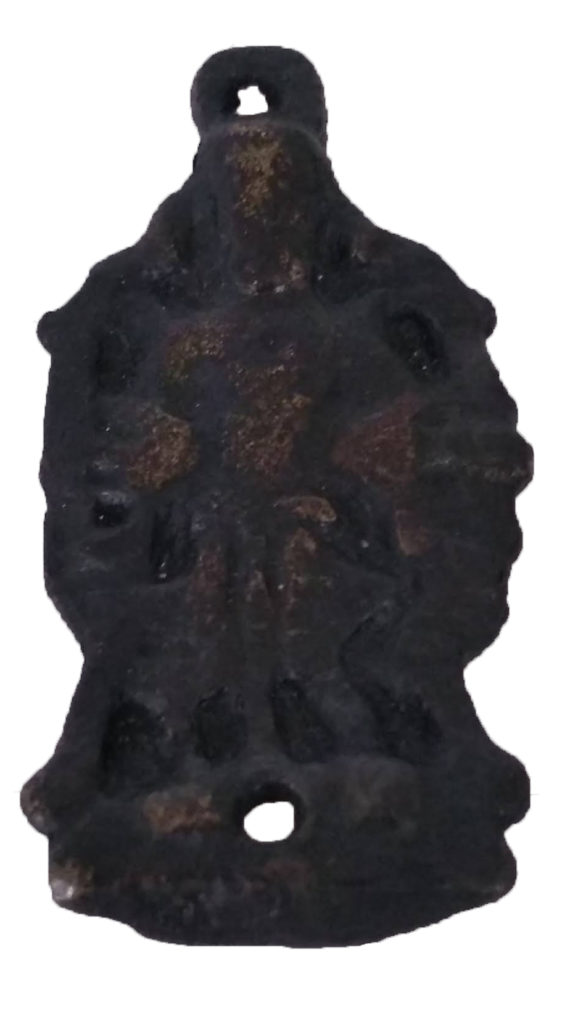

Stirrup Strap Mount
9th-11th Century AD
Copper Alloy
Stirrup strap mount depicting standing figure surrounded by snakes.
Mounts like these were used to join the stirrup to its leather strap. The strap was passed through the loop at the top of the stirrup, and was then held in place by one of these mounts fixed to it with rivets. The serpent decoration is characteristic of Viking art.
Found by S. Hall and G.T. Hall while metal detecting at Barham Court Farms, Barham.
Reference: CANCM:2003.489.1
Can be found: Explorers and Collectors Collection
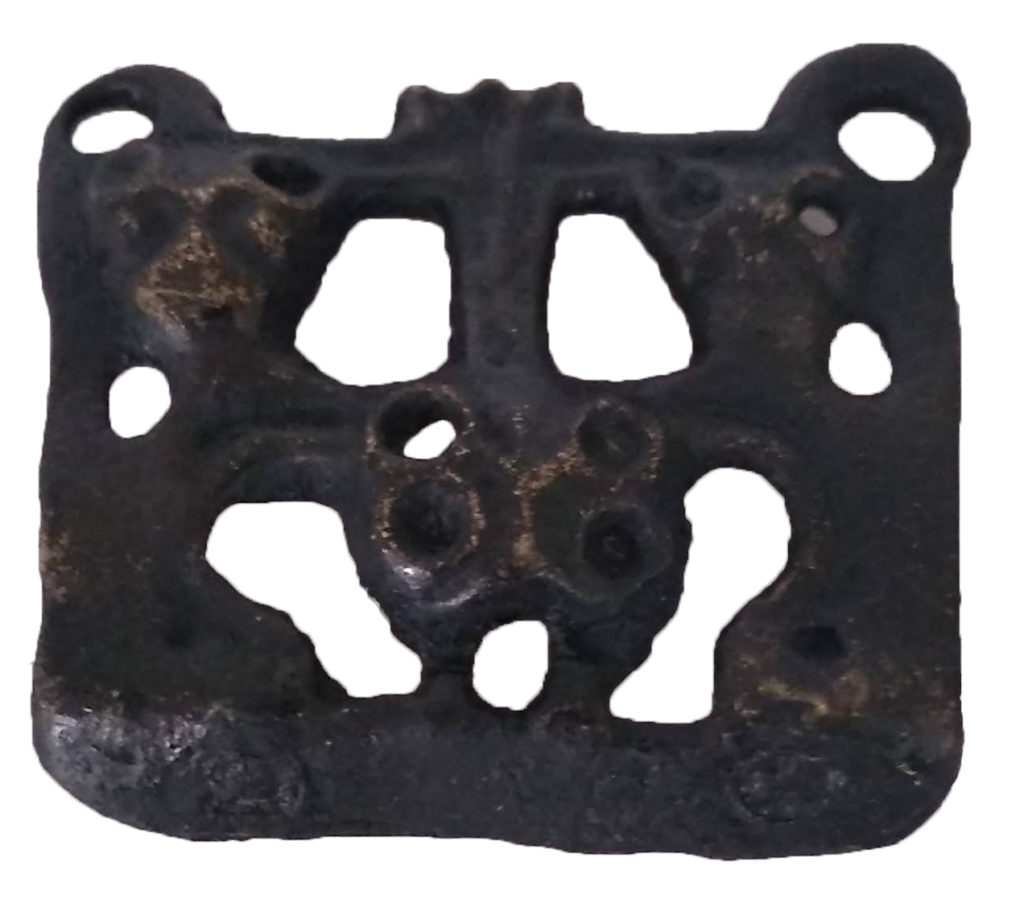

Stirrup Strap Mount
9th- 11th Century AD
Copper Alloy
Stirrup strap mount depicting two rampant beasts. Decoration featuring animals is characteristic of Viking art.
Found by S. Hall and G.T. Hall while metal detecting at Barham Court Farms, Barham.
Reference: CANCM:2003.489.2
Can be found: Explorers and Collectors Collection


Stirrup Strap Mount
9th -11th Century AD
Copper Alloy
Stirrup strap mount depicting a bird.
Found by S. Hall and G.T. Hall while metal detecting at Barham Court Farms, Barham.
Reference: CANCM:2003.489.3
Can be found: Explorers and Collectors Collection
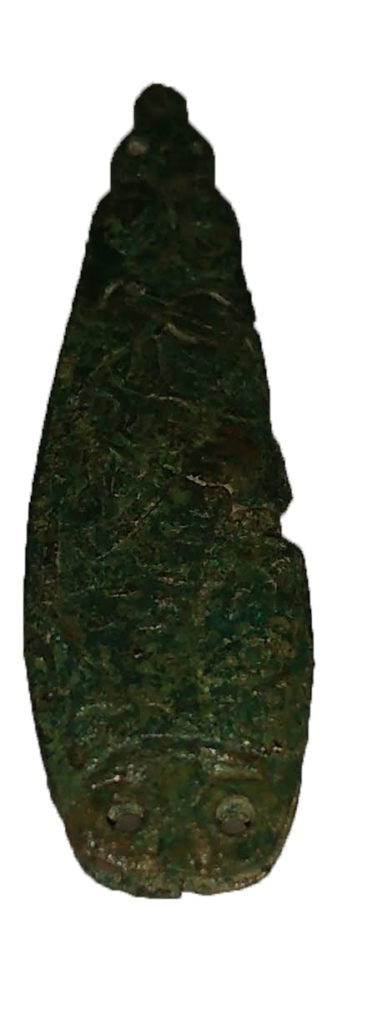

Strap End
9th Century AD
Copper Alloy
Strap end. A strap end would have been attached to the end of a belt or strap of a harness as decoration. They would protect the leather end of the strap and make it easier to thread, but despite this very functional purpose they were still considered jewellery in their own right.
Excavated in 1993 from Canterbury Christ Church College. Presented by Canterbury Archaeological Trust.
Reference: CANCM:1993.5.45
Can be found: Explorers and Collectors Collection
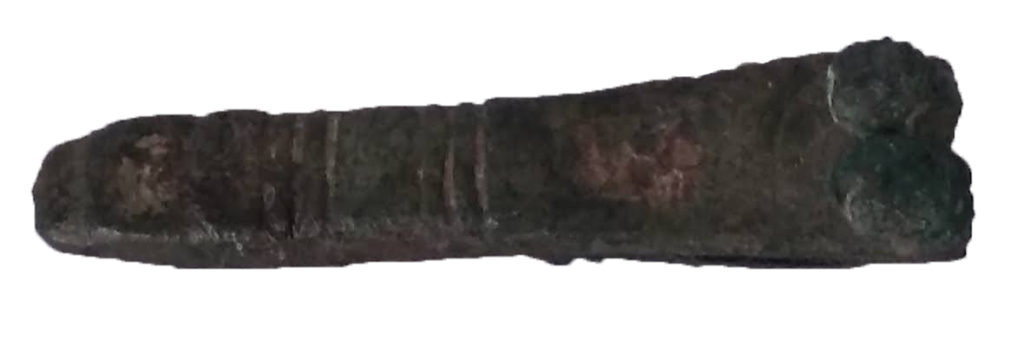

Strap End
11th Century AD
Copper Alloy
Strap end.
Presented by Canterbury Archaeological Trust.
Reference: CANCM:1983.10.859
Can be found: Explorers and Collectors Collection


Strap End
9th-11th Century AD
Copper Alloy
Strap end.
Presented by Canterbury Archaeological Trust.
Reference: CANCM:1990.11.2229
Can be found: Explorers and Collectors Collection

